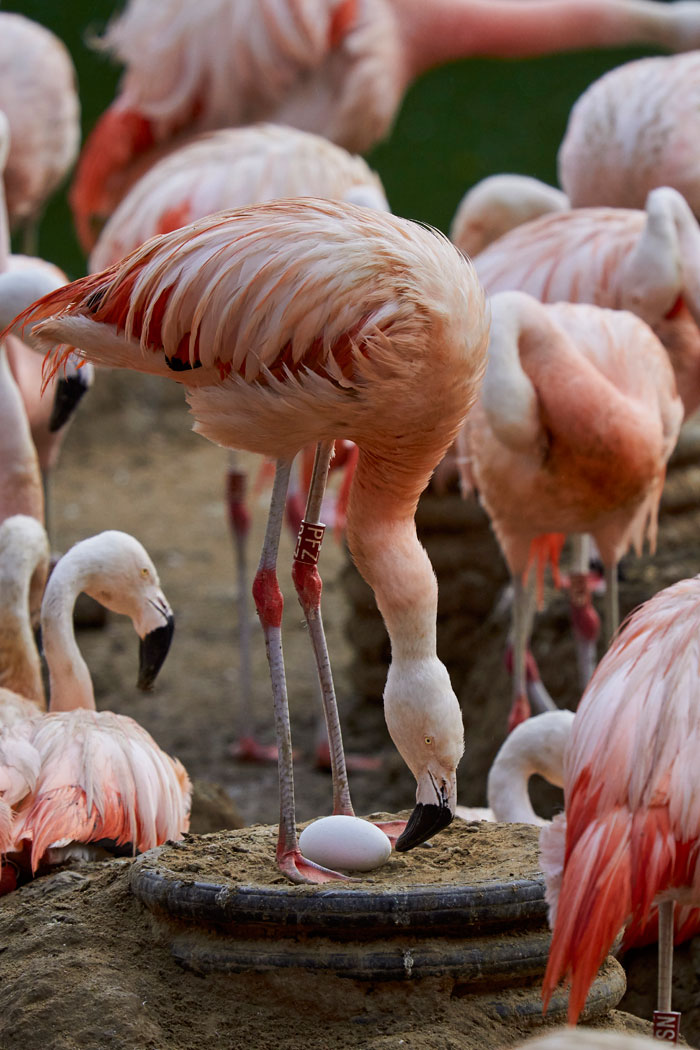First Chilean flamingo hatchlings of season

Hatchlings have started at the end of August and 7 chicks can already be seen in our colony which gathers more than 310 individuals!
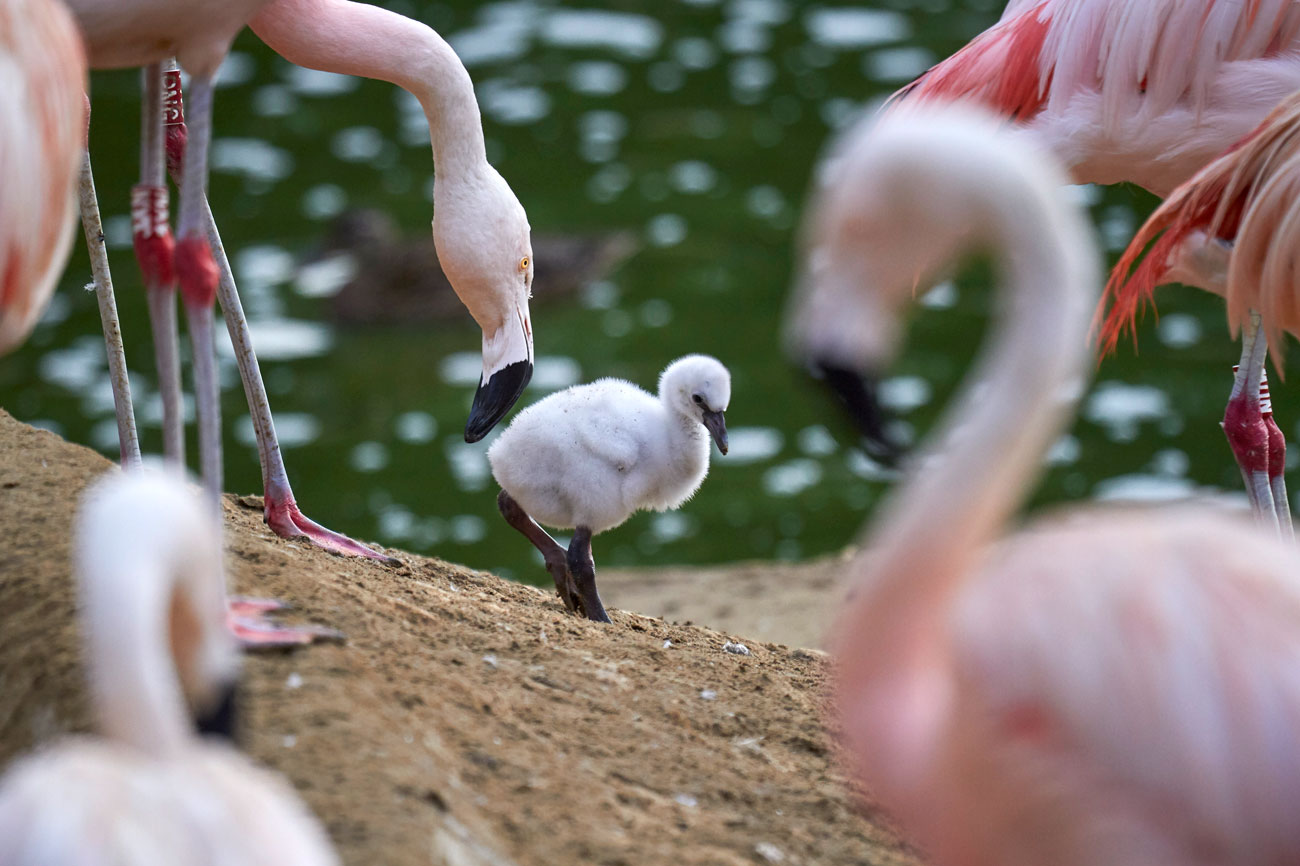
Several dozens of eggs have been laid this year. We’re expecting about twenty eggs to hatch in the colony within the month, to which will be added those from the bird nursery: 25 eggs have been put into incubators after they had fall from their nest or because they were not incubated by the adults.
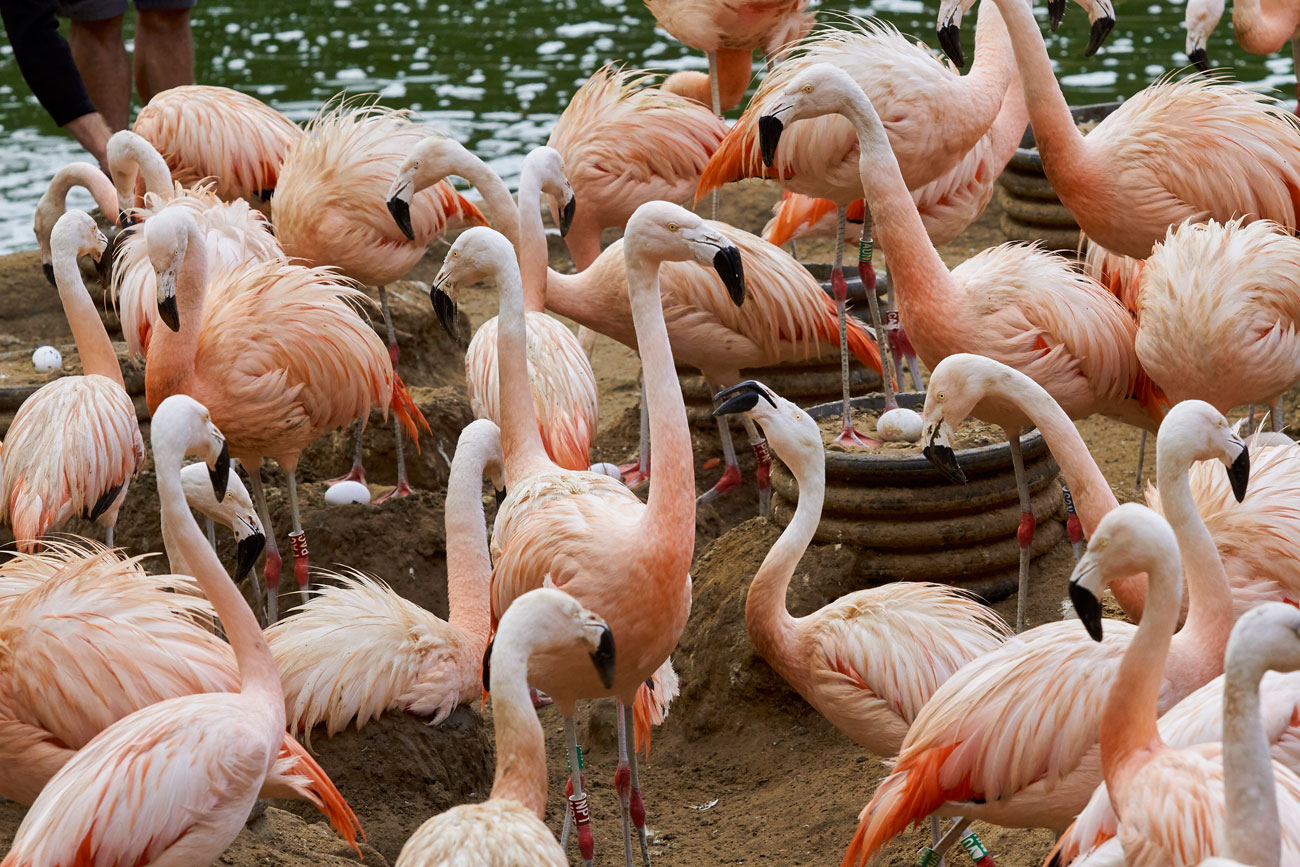
An egg whose hatchling had started in the bird nursery has been brought back on a nest of the colony so that the parents could raise the chick. The egg has hatched and the chick is now perfectly fed by the adults!
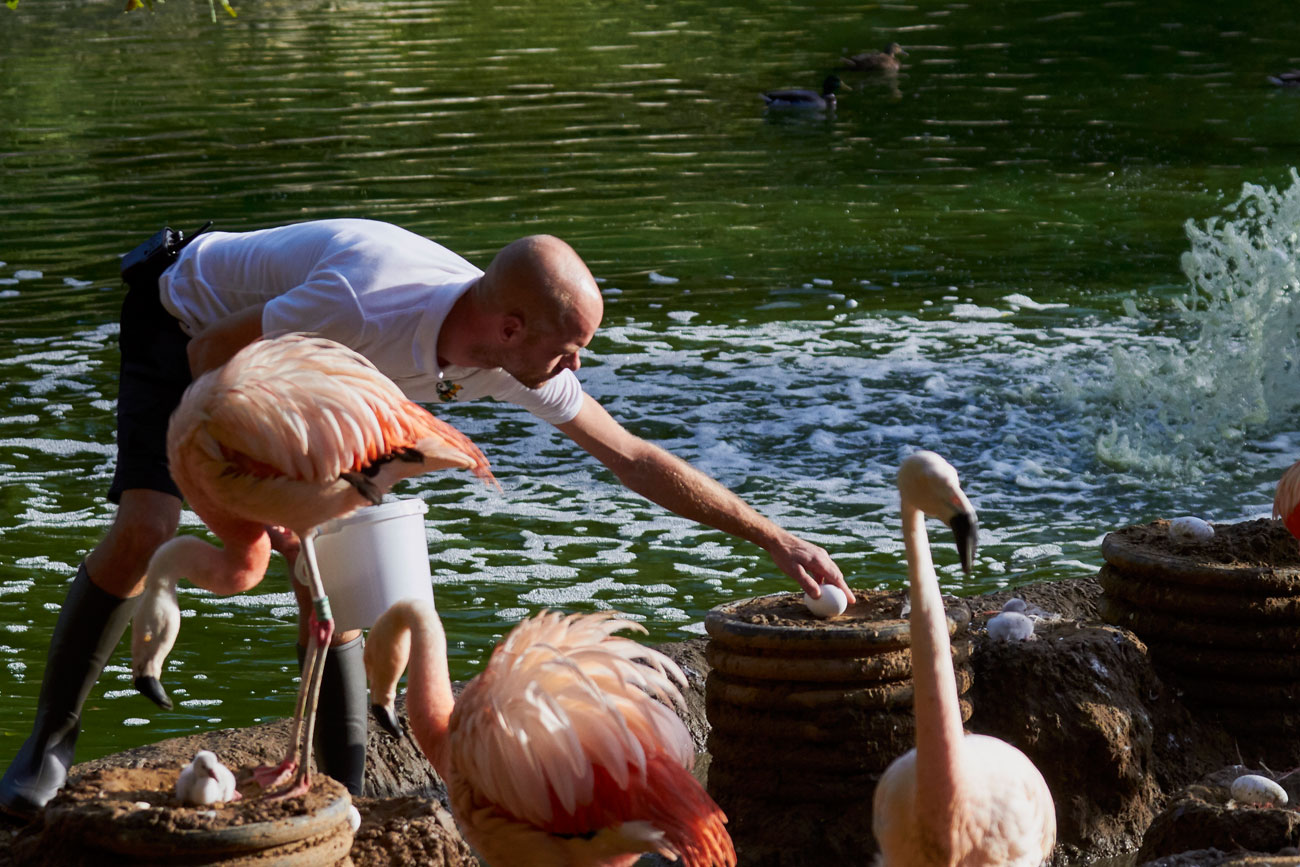
An egg that had started to hatch at the bird nursery is put on a nest by a keeper © F. Perroux/Zoo de La Palmyre 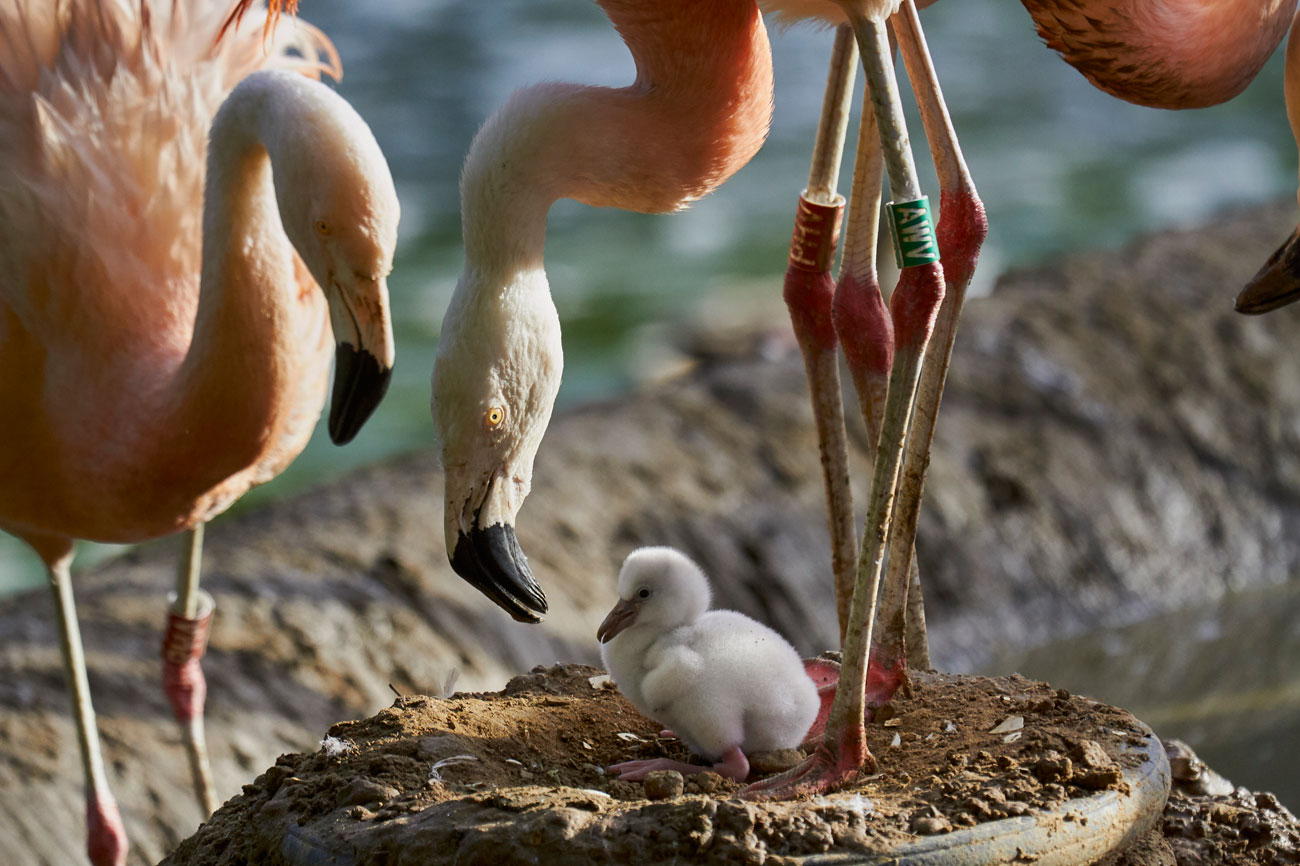
A 24-hour flamingo chick © F. Perroux/Zoo de La Palmyre
There are 6 species of flamingos: 4 live in South America and 2 are distributed in Africa, Asia and Europe.
The Chilean flamingo has the largest population of all South American species with nearly 300,000 individuals recorded. Its pale pink plumage highly contrasts with that much brighter of the Caribbean flamingos that can be seen at the entrance to the zoo and which form our second colony of flamingos.
Flamingo feathers get their pink color from natural red, yellow or orange pigments called carotenoids produced by the microscopic algae and shrimps that flamingos feed on. Newly-hatched Chilean flamingo chicks are white and turn gray after a few weeks. Their beak and legs, initially pink, turn black after 7 to 10 days. But they lose their juvenile color over a two or three-year period at which time they get full adult pink coloration. The coloration of the parents pales to a lighter pink while they feed their chick: the carotenoids contained in their feathers pass into the secretion regurgitated to the chick. The chick stores the pigment in the liver so that it can be deposited in its feathers when it reaches adulthood.
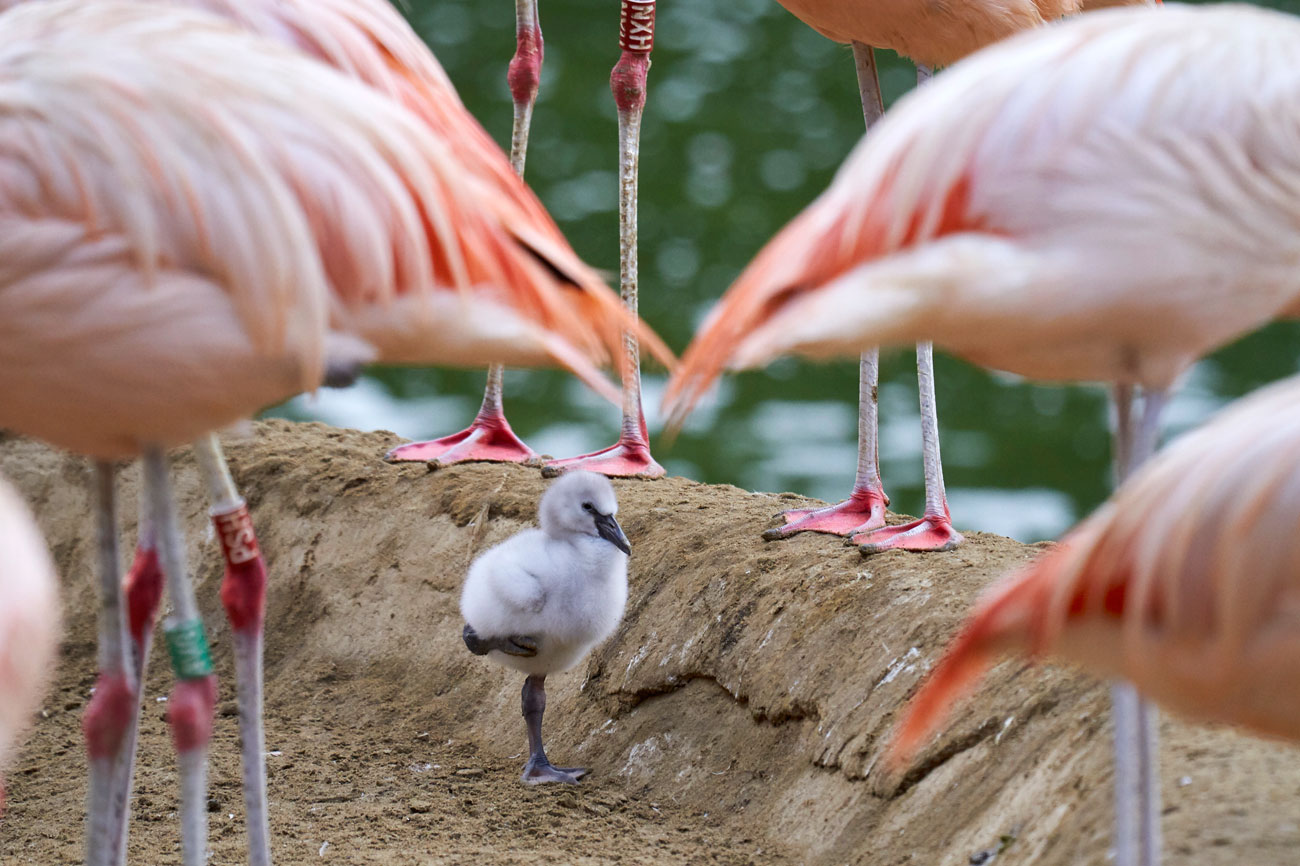
During the breeding season, flamingos build small volcano-shaped nests made of mud and feathers.
Both male and female participate in nest building. They also take turns incubating the single egg laid by the female and feeding the chick.
